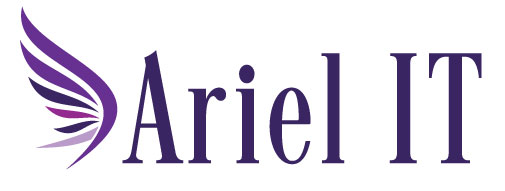Systems Monitoring and Management
Small Business IT: Monitoring and Management

Let’s look at the areas of IT that require monitoring and management to avoid interruptions to your business:
- Server uptime and availability
- Network bandwidth and availability
- Storage and disk capacity
- Domain Name Registration and Renewal
- Software & Licensing
- User Account Privileges
- Security Patching
- Data Backups and Restores
Servers
Your business and its data depend on your servers being available. A managed services provider can monitor your servers to detect if any go offline or are overloaded. This monitoring will also check that your server applications are running as expected. If your servers are located in the cloud and are shared resources, it is important to monitor when and how often they reach peak loads so you can decide when to upgrade or change service levels. Monitoring checks the server’s health and alerts IT to a potential problem before it can affect your business.
Network
As your business grows, your network infrastructure may need to grow as well. A firewall, switch or Wireless Access Point (WAP) that served you well up to this point may require an upgrade to support new requirements and demands. Your broadband internet connection may need to be expanded to handle more bandwidth or upgraded to an enterprise grade connection for reliability and performance. Automated monitoring can detect interruptions to the network as well as provide data to make an informed decision on network infrastructure upgrades.
Storage and Disk Capacity
Adding additional employees, growing customer use and adding new applications can put a strain on your storage and server disk systems. By monitoring disk capacity and disk access, you’ll know when your storage is approaching disk space limits or disk systems start performing slowly before these issues affect your applications and services. In addition to performance and capacity, monitoring also ensures the environment is running and available.
Domain Name Registration and Renewal
Your domain name is the face of your business to customers and prospects via your website, is required for email communication and is very likely used to provide employees and customers access to your business for things like remote access, portals, contact forms, support requests, and more. The impact of an expired (or lost) domain is costly and registration status should be monitored. The Registrar is where your domain name is registered and maintained and is probably not in the same place your website, email and DNS are hosted.
Here are the things you need to know about your domain name:
- What domain name(s) does your company have registered? Which domain(s) do you use?
- What services and applications use your domain(s). These typically include your website, email, some applications, remote access, and SSL Certificates for secure sites.
- What Registrar are your domain name(s) registered at? (arielMIS Domains, Network Solutions, Go Daddy, etc). Are your domains at more than one Registrar? If so, consider consolidating them to one Registrar for ease of management.
- Do you have the Administrator Login to the Registrar? (Who else knows the login?)
- Is the information in the registration correct? That includes up to date credit card information as well as contact information for the administrative, billing and technical contacts you want associated with your domain(s). And make sure your company name is correct!
- What is the renewal date for the domain? Is the domain set to automatically renew or manually renew? Either is fine, but if it’s manual that means someone must login to renew it!
The impact to your business if your domain expires can result in lost business, loss of access to critical systems, lost (or significantly delayed) email and more depending on how many your services use it. If this happens mid-day Friday before a long holiday weekend you might not even realize there’s an issue until you’re back to work 3 or 4 days later.
Paying attention is the best way to avoid letting your domain name lapse or expire. And partnering with an IT Provider that has additional tools to monitor your domain, website, email and other services is added protection against your domain name(s) expiring.
Software & Licensing
Does your business know what software installed on each computer and details about the associated software license? When each computer is managed separately instead of centrally, it is easy to lose track of what software is installed on each computer and whether its license is current.
Do you have sufficient licenses to cover the number of installations you have for a specific software title, or have your employees unknowingly shared installations? Vendors like Microsoft are auditing businesses routinely to determine if you are licensing their products correctly. Being under-licensed can expose your business to a variety of penalties from simply acquiring the necessary licenses to cover your shortfall, to fines or lawsuits for failure to comply with End User License Agreements (EULA).
Paying for licenses you don’t use wastes resources your business could be investing elsewhere. Employees installing and using software that your business hasn’t approved can put your data at risk. And finally, software that was installed unintentionally may slow down a computer or put your data or systems at risk.
Partnering with an IT service provider who can provide central management tools will help provide insight into what is installed on each machine.
User Accounts
Employees need user accounts on your systems to do their jobs, but do you know which employees have administrative privileges to your servers and systems? If an employee leaves the company, are those accounts removed and is there another employee with access to take over?
To ensure your business’s computers, network, and IT services are uninterrupted it is imperative to audit your systems for user accounts that are not aligned with the business:
- Which employees need access to each system?
- Who has access to third party vendor and service provider accounts?
- What level of access do they need to that system? i.e. administrative, view only, other
- Do any of the employees with high levels of access have insufficient training that their access may cause the business harm if they make an innocent mistake?
- Who has access that shouldn’t have access? Validate and remove those accounts.
- Are there any shared passwords (wireless networks) that need to be changed when employees leave the company?
- How long after an employee leaves the company before his or her credentials and user accounts are revoked? If that was a disgruntled employee, how much damage could they cause before their account is discovered and removed?
- Have you established clear guidelines and policies for your IT department or service provider to enforce regarding user accounts and privileges?
Security Patching
Each computer, server and device on your network requires security patching to protect your business against viruses, malware, and cyber-attacks. Keep these tasks in mind when tracking if your computers are up to date:
- Which software is installed in your environment?
- When does that software publisher release updates and patches? Are they released on a predictable schedule?
- How does your business download those updates and patches?
- Does the update require testing against other business critical software to ensure it does not break an unrelated system?
- Are any operating systems or programs reaching their end of support from their publishers and require an upgrade to continue being patched?
- Are your computers capable of running upgraded software (for example, sufficient CPU speed and memory)?
- Is it easy to track which computers and devices have successfully installed the security patch?
- Can you identify which systems failed to install the patch so IT can determine why?
Data Backup and Restores
Your business depends on its systems and data, so backing up that information is important in case there is a cyber-attack or natural disaster that affects your production servers and computers.
If you are already backing up your systems, do you know:
- Which systems are backed up? Often user data is not included.
- How often are they backed up? Is this automated or does it require an administrator to complete?
- Was the last backup successful?
- How many days/weeks/months are previous backups retained?
- Are your backups on premise with your business, on site with your provider’s servers, on the same physical server, off site in a separate facility?
- How long would it take to restore if you needed to? Do you have a plan for business operations during that time?
Simply backing up your systems and trusting it will be there when you need it is not enough when it comes to making sure your business operations are available every day. Review your backup service agreement to validate all critical systems are backed up and that your business has the right level of service for your needs and budget.
Whose job is it anyways?
We’ve covered some of the many IT systems and processes that require monitoring and management. It’s a lot to keep track of, so consider partnering with Ariel IT, an experienced IT service provider. We can work with you to identify critical systems, track updates and renewals, and manage the details for you.
